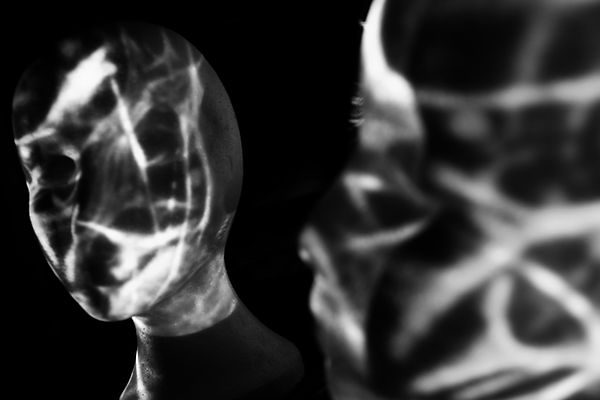Sim Dream
Following the extraordinary exhibition ‘Lucid Dreams’ at the Israel Museum, Jerusalem, curated by Adina Kamien and associate curator Sarah Benshushan, here are some thoughts and related original artworks:

It’s not Picasso cup of tea, a Méret Oppenheim tribute
Projection Mapping Photography by Yoav Ruda
2023
100 surreal years
It has been a wild 100 surreal years, and puzzling 125 years of dream interpretations.

Projection of the mind
Projection Mapping Photography by Yoav Ruda
2020
An Embryo dream
Intriguing facts:
* The younger one is, the more one dreams.
* A human embryo spends more than half the time dreaming.
Dr. Raz even, the editor of 'DREAM THEORIES AND SCIENCE OF DREAMING', brought these fascinating findings to my attention back in 2012, while I was working on an animated documentary about dreams. The findings seem to support the notion that dreaming forges new neural connections and, more broadly, facilitates brain development.

I dream of Great Green Glob
Double exposure 35 mm film contact by Yoav Ruda
2000
More meaningful facts:
* Dreaming of an action activates many of the same brain regions and processes that are engaged when we perform the action while awake.
* A specialized mechanism, known as REM atonia (muscle paralysis during REM sleep), prevents us from physically acting out our dreams.
Mirror Neurons and dreams
A similar phenomenon is observed in mirror neurons, widely considered one of the most significant discoveries in neuroscience in recent decades.
Mirror Neurons fire both when one acts and when one observes the same action.
Mirror neurons are essential part of:
* our identification mechanism
* compression
* learning process

Mirror Neurons set
Projection Mapping Photography by Yoav Ruda
2014
Bio simulator
Research suggests that the mirror neuron mechanism is also active when we:
* watch a movie
* listen to a radio play
* read
* imagine
This phenomenon may represent a fundamental feature of human cognition. The brain functions as a biological simulator. Whether we’re thinking, dreaming, or imagining, the brain lights up many of the same pathways as if we were truly doing the thing ourselves.
We live to dream and dream to live...

Subjector
Projection Mapping Photography by Yoav Ruda
2015